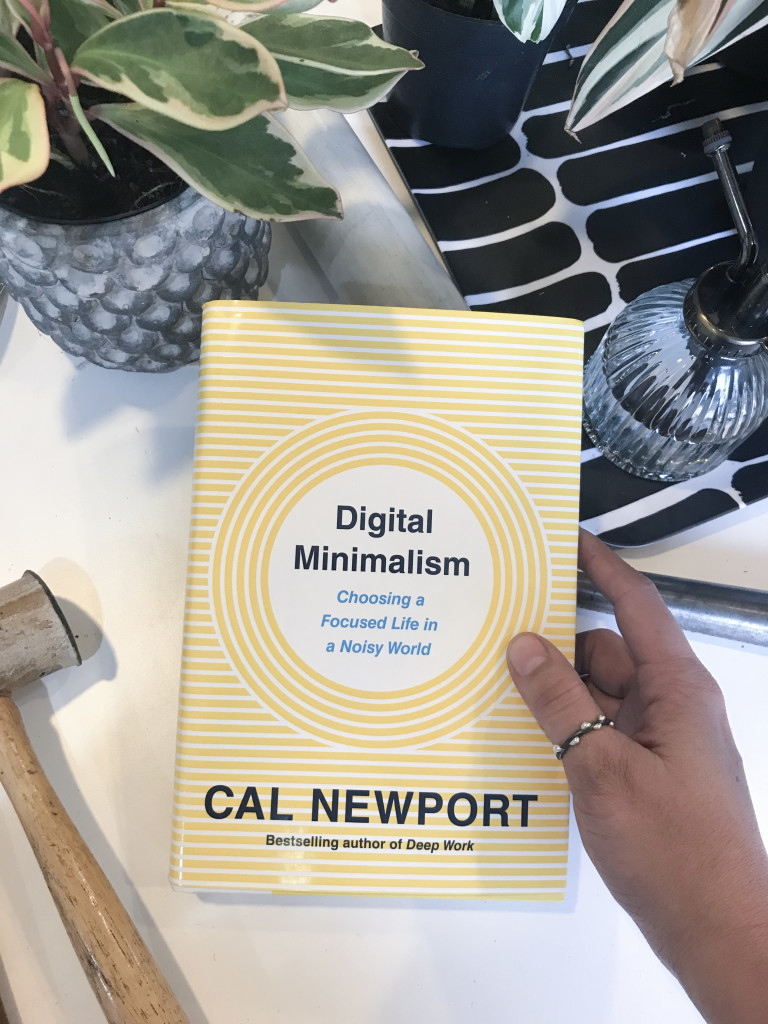
For the past few months, I’ve started to feel like my social media usage had reached an unhealthy level. While I almost never use Facebook, I do use Instagram regularly to promote my business and connect with friends and customers. And while I LOVED Instagram when it first came out (and while I do still love it in certain moments) I started to notice that the time I was spending there was making me feel anxious and angry, not happy and fulfilled.
Which is why I couldn’t wait to get my hands on Cal Newport’s new book, Digital Minimalism, when it came out earlier this month.
I’m a big fan of Newport’s previous books, So Good They Can’t Ignore You and Deep Work, so I had high hopes for this new book. And it didn’t disappoint!
Newport opens the book with research about why digital technology in general and social media in particular is causing us such stress and anxiety before pivoting into practical strategies to help you embrace digital minimalism. (Which, for the record, doesn’t mean quitting completely. Which is good news for someone like me, who needs to use digital tools and social media to promote her business, but wants to develop a much healthier relationship with technology.)
I’m not going to outline the book in detail here, because honestly, I think everyone who owns a smartphone should just go buy this book now! But just like my review of Joyful, I want to share a few of my big takeaways.
The biggest thing for me was that, one of the key reasons many people fail when they try and cut back on social media or screen time is that you have to have meaningful hobbies in place BEFORE you try and cut back. Otherwise, you’re just left anxious without the ability to check your phone.
For me, the first thing I decided to change (even before reading this book) was swapping my phone time for more reading time. (And with real books, not the Kindle app on my phone or iPad.) I have always been an avid reader, but I noticed that my reading level has gone down lately. After checking my the amount of time I was spending on Instagram every day, I realized I needed to replace that screen time with reading time.
So I started strategically placing books in places in my house where I’m apt to mindlessly scroll my phone and I’ve started bringing a book with me wherever I go. (The other week, I even sat and read at the bar after meeting with a girlfriend. It was one of the most relaxing Friday nights I’ve had in a long time.)
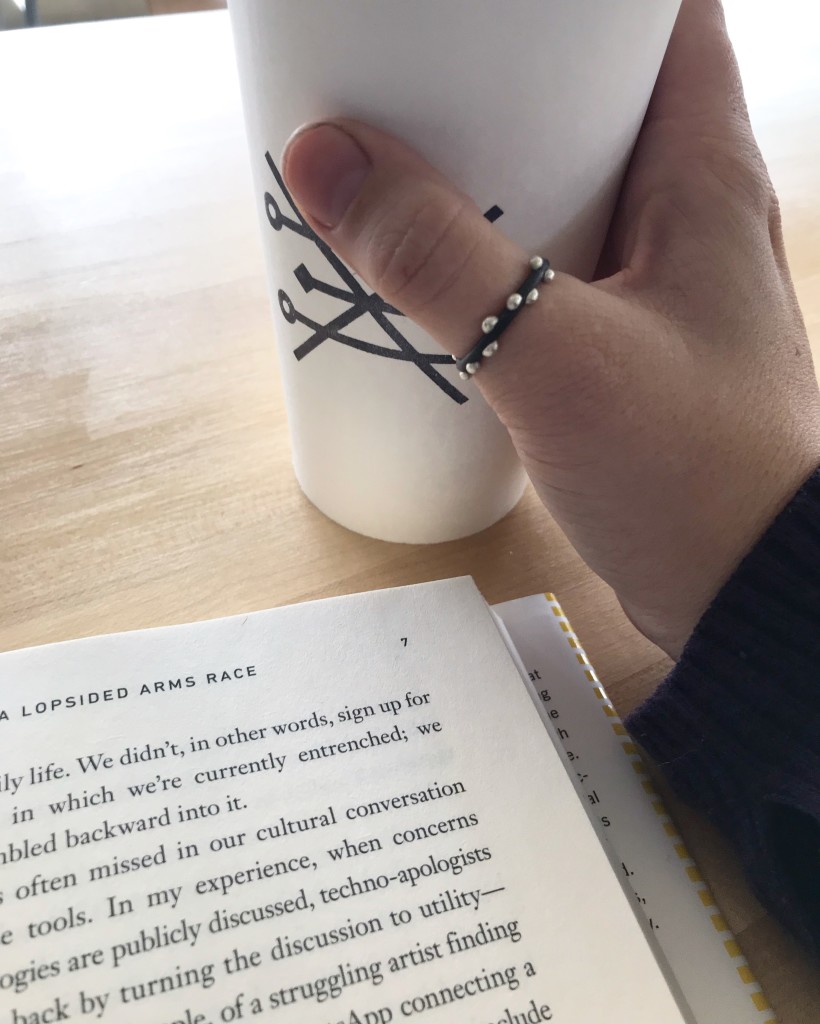
The even bigger takeaway for me was the important of cultivating high-quality leisure activities. These are hobbies, activities, groups, or clubs – more meaningful activities to commit your time to then endlessly scrolling on your phone. In particular, Newport emphasizes the importances of hands-on activities, like making or repairing things.
The insights in this chapter led me to two realizations:
First, it makes total sense that I was drawn to my new plant obsession, um, I mean hobby, right around the time that I was feeling most frustrated with Instagram. Plants are a perfect real world, high-quality leisure activity. I had chosen plants because I really wanted to cultivate (pun intended) a new hobby that was both non-making and non-fitness related. (Don’t get me wrong, I love making things. But when you do it as your job, like I do, it’s not to have a different type of hobby. And the same goes for fitness. I love running and cycling. But as a high school cross country and track coach, I get a lot of that too, especially in season. So I wanted something different.)
Second, that it was time to dust off a project I started a while back, called Modern Metalsmithing, in order to help other people develop their own high-quality leisure activities. I started Modern Metalsmithing back in 2017 when I taught a few online metalsmithing classes for Creative Live. My goal was, and still is, to make metalsmithing accessible to everyone as something you can do at home at the end of a long day. (Like sewing’s badass older sister.) Besides the classes I’ve already created (which are available on demand) I’m excited to dive into more blog posts and classes there. (So if you’ve ever been curious about learning how to metalsmith at home, I suggest checking it out.)
What I love most about Digital Minimalism is that these are just a small sampling of the strategies you can employ to develop a healthier relationship with technology in general and your phone in particular. You may get something totally different out of the book, and that’s ok. But whether you’re feeling anxious about the amount of time spent on social media, trying to be more productive in your work life, or hoping to cultivate a more fulfilling life beyond screens, you’ll find some really valuable insight and practical strategies in this book!
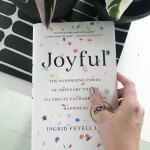
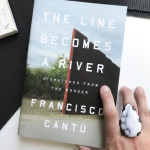
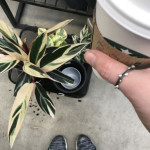

Lately I’ve been feeling like shouting this message from the rooftops! “We need to do more things with our hands! Bake bread, make a shelf, knit a sweater, write a letter, hug a friend.”
Thanks for the book recommendations, Megan. Keep ’em coming!
Megan, THANK YOU! You’re thoughts, advice and comments resonate with me so much.
I’m obsessed with plants and herbs myself and the extra curricular activities really help in staving off my phone habit. Not just that it’s also informing my work, as I see it is yours too.
You have such insightful posts and I really appreciate them. I’m going to try and scoop up some of these books too.
Dear Megan, thanks for this insightful post. Last year my computer crashed. and I had to get a new one. which I am still learning how to navigate . But I find lately , that I am spending alot less time on it than I did on my old one. And though I read some stuff on line. I really do prefer regular “old school” books. I think that they are better for our eyes and possibly our Brains. I tend to retain more info from books than from the screen . And I am sure that doing more non -online Non On-phone stuff with our hands is very healing.